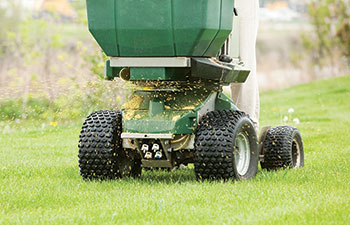Learn why fertilizer prices are on the rise
It’s no secret that the cost of fertilizer has increased. Jeremy Bigler, landscape channel manager for LebanonTurf, Mike Caprio, regional business consultant for the Southeast territory of Lawn Doctor, and John Perry, president of Greene County Fertilizer Co., explain the increase and lay out a few ways groundskeepers can offset the cost.

The high cost of raw materials and high demand have led to an increase in fertilizer prices. (Photo: BanksPhotos/iStock / Getty Images Plus/Getty Images)
Why the increase?
Raw material costs have driven the price increases on finished good products, Bigler says, and the three key raw materials in fertilizers — urea, ammonium sulfate and potash — have all increased significantly over the last year.
Bigler notes that urea is up 70 percent compared to last year, ammonium phosphate is up more than 80 percent and potash is up more than 50 percent. He says the industry is also seeing shortages of specialty materials in smaller granular sizes.
“There are shortages where you can’t even buy those products until the end of this year,” Bigler says. “There’s been a lot of demand because of the pandemic.”
The increase is based on the indexes for crops like corn, wheat and soybeans.
“On all of those crops, the prices have gone up significantly over the last year,” Bigler says.
Shipping and securing raw materials are also taking a lot longer, Bigler says.
“You’re also seeing some issues with logistics, so the whole just-in-time philosophy, stocking stuff just when you need it, is causing shortages, and if you want it faster or sooner, it usually costs more,” Bigler says.
Another possible reason for the increase, Perry says, is last year, the nitrogen production facilities were not running at 100 percent because demand was lower than normal, and that caught up really quickly once COVID-19 caused people to spend more time at home.
“At the beginning of COVID, no one had good predictions on what was going to happen, but with more people being at home, fertilizer companies saw record profits,” Perry says. “Then, couple the reasons above with the winter storms early in the year in Texas and across Louisiana, and it put yet another pinch in the market and drove the prices up at that time.”
Combatting the cost
To help offset some of the cost, groundskeepers can take advantage of early order programs by forecasting what their needs will be next year, ensure spray equipment is calibrated properly and make sure crew members are properly trained so they’re not wasting products when mixing or applying, according to Caprio.
“Forecast accordingly, order your materials and, from a business model, take a look at your profit and loss statement and see where you can pick up some efficiencies somewhere else,” Caprio says. “It’s not as if the product is going to go bad, so even if you had a little bit left over, whether it be fertilizer or weed control or fungicide, you can use it the next season.”
Bigler says groundskeepers can also aim to apply less product or look to incorporate slow-release products.
“Instead of putting down a pound of nitrogen, look at putting down three-quarters of a pound of nitrogen or maybe even as low as half a pound of nitrogen per application. That’ll be a way to cut back on the material costs,” he says. “Also, if you use the product that has a higher slow-release content, you’re going to get a longer feeding time and be able to stretch it out longer than something that’s quick release.”
Perry notes that groundskeepers may feel more of a strain this year because once the prices had taken off, companies may have already set budgets or sent out prepay letters. Next year, however, many companies will be able to equalize and pass on the higher cost of goods to the consumer.
“This year is a little bit tighter for operators because of this uncertainty and the rising cost of goods,” Perry says. “That’s included in anything related to shipping transport and petrol chemical right now. Pesticides and herbicides are doing the same thing.”
An eye on the future
Bigler says the demand for fertilizers fluctuates depending on the season, and while prices are usually high because the demand is high, when the demand drops off, prices may stabilize. However, this year, due to other factors, it’s difficult to judge when the prices may drop again — and by how much.
“Historically, this time of year, we see prices start to drop off, but I haven’t seen any indication of that yet, and this year is not shaping up as we expected in a lot of ways,” Bigler says. “It’s difficult to judge with the pandemic, and then if we continue to see supply chain disruptions, that could also have an impact on this. It’s something we’ve been keeping a close eye on because there’s not much we can do about it as far as putting these components together into a finished good.”
Perry notes that higher prices may be a new normal for groundskeepers to adjust to.
“The industry is trying to find a place to set to that will be the new zero,” Perry says. “There will be some new ebbs and flows, but I don’t know if it will go back to where it was. However, fertilizer prices are always moving, so there’s nothing predictable about it.”










